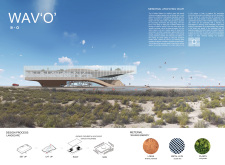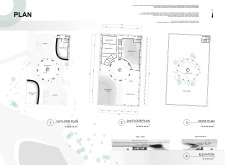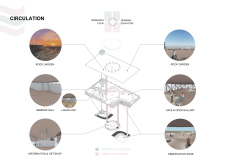5 key facts about this project
The architecture showcases a contemporary style that blends modern materials with traditional influences, creating a dialogue between past and present. The project is characterized by its clear lines and open spaces, which encourage natural light to filter through, enhancing the overall atmosphere within the building. The design prioritizes sustainability, incorporating features such as energy-efficient systems and environmentally responsible materials. This attention to sustainability not only reduces the building's ecological footprint but also fosters a sense of stewardship towards the environment.
One notable approach in this project is the use of versatile materials that promote durability while ensuring a visually appealing aesthetic. Key materials include [list of materials, e.g., high-performance glass, locally sourced timber, and resilient concrete], each selected for its properties and contribution to the overall design narrative. The combination of these materials not only supports the structural integrity of the building but also elevates its visual intrigue, encouraging interaction with the space.
In examining the layout, it becomes evident that the project excels in creating a fluid spatial organization. Each area flows naturally into the next, promoting an intuitive experience for users. Shared spaces are positioned strategically to encourage collaboration and community interaction, while private areas provide necessary retreats for individual reflection or focused work. This careful consideration of circulation and accessibility reflects a deep understanding of user experience.
Unique design elements within the architecture highlight the project's commitment to artistic expression and functionality. Features such as [describe unique architectural details, e.g., cantilevered roof sections, green walls, or integrated outdoor spaces] serve both aesthetic and practical purposes. These elements not only enhance the visual appeal of the building but also contribute to a sustainable ecosystem that supports local flora and fauna.
The integration of technology further defines this project as a forward-thinking architectural endeavor. Smart building systems enhance user comfort while optimizing energy use, creating an environment that is both user-centric and efficient. This emphasis on incorporating modern techniques without sacrificing design integrity sets this project apart in a competitive architectural landscape.
As one explores the various facets of this architectural design, the richness of the project becomes apparent. For those interested in delving deeper into the specifics, the architectural plans, sections, and designs are available for review. These documents provide valuable insights into the project’s conceptualization and execution, revealing additional layers of thought that underpin the architecture. Visitors are encouraged to engage with these elements to fully appreciate the design ideas that make this project not just a physical space, but a vibrant part of its community.


























